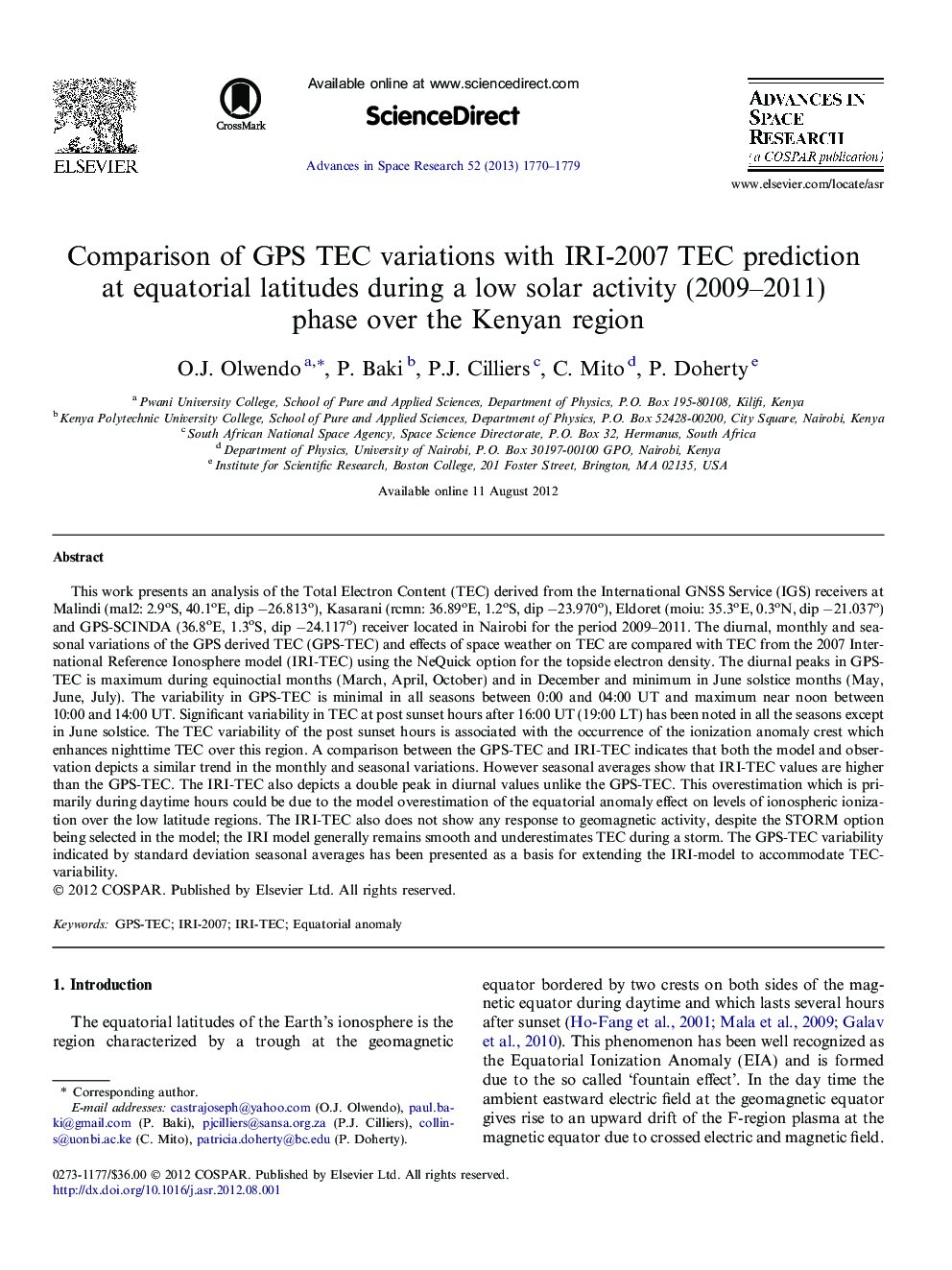| کد مقاله | کد نشریه | سال انتشار | مقاله انگلیسی | نسخه تمام متن |
|---|---|---|---|---|
| 1764403 | 1020054 | 2013 | 10 صفحه PDF | دانلود رایگان |

This work presents an analysis of the Total Electron Content (TEC) derived from the International GNSS Service (IGS) receivers at Malindi (mal2: 2.9oS, 40.1oE, dip −26.813o), Kasarani (rcmn: 36.89oE, 1.2oS, dip −23.970o), Eldoret (moiu: 35.3oE, 0.3oN, dip −21.037o) and GPS-SCINDA (36.8oE, 1.3oS, dip −24.117o) receiver located in Nairobi for the period 2009–2011. The diurnal, monthly and seasonal variations of the GPS derived TEC (GPS-TEC) and effects of space weather on TEC are compared with TEC from the 2007 International Reference Ionosphere model (IRI-TEC) using the NeQuick option for the topside electron density. The diurnal peaks in GPS-TEC is maximum during equinoctial months (March, April, October) and in December and minimum in June solstice months (May, June, July). The variability in GPS-TEC is minimal in all seasons between 0:00 and 04:00 UT and maximum near noon between 10:00 and 14:00 UT. Significant variability in TEC at post sunset hours after 16:00 UT (19:00 LT) has been noted in all the seasons except in June solstice. The TEC variability of the post sunset hours is associated with the occurrence of the ionization anomaly crest which enhances nighttime TEC over this region. A comparison between the GPS-TEC and IRI-TEC indicates that both the model and observation depicts a similar trend in the monthly and seasonal variations. However seasonal averages show that IRI-TEC values are higher than the GPS-TEC. The IRI-TEC also depicts a double peak in diurnal values unlike the GPS-TEC. This overestimation which is primarily during daytime hours could be due to the model overestimation of the equatorial anomaly effect on levels of ionospheric ionization over the low latitude regions. The IRI-TEC also does not show any response to geomagnetic activity, despite the STORM option being selected in the model; the IRI model generally remains smooth and underestimates TEC during a storm. The GPS-TEC variability indicated by standard deviation seasonal averages has been presented as a basis for extending the IRI-model to accommodate TEC-variability.
Journal: Advances in Space Research - Volume 52, Issue 10, 15 November 2013, Pages 1770–1779